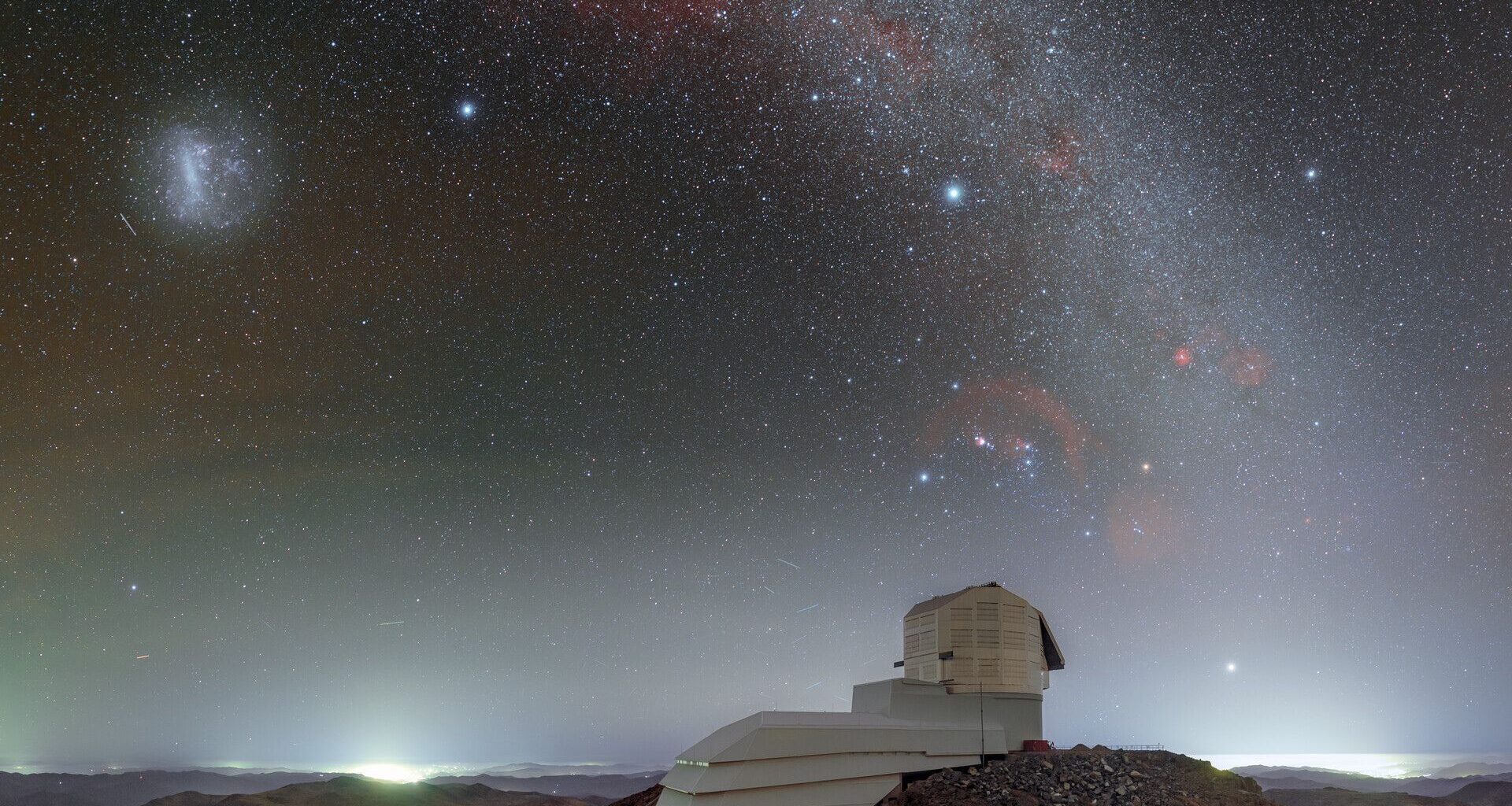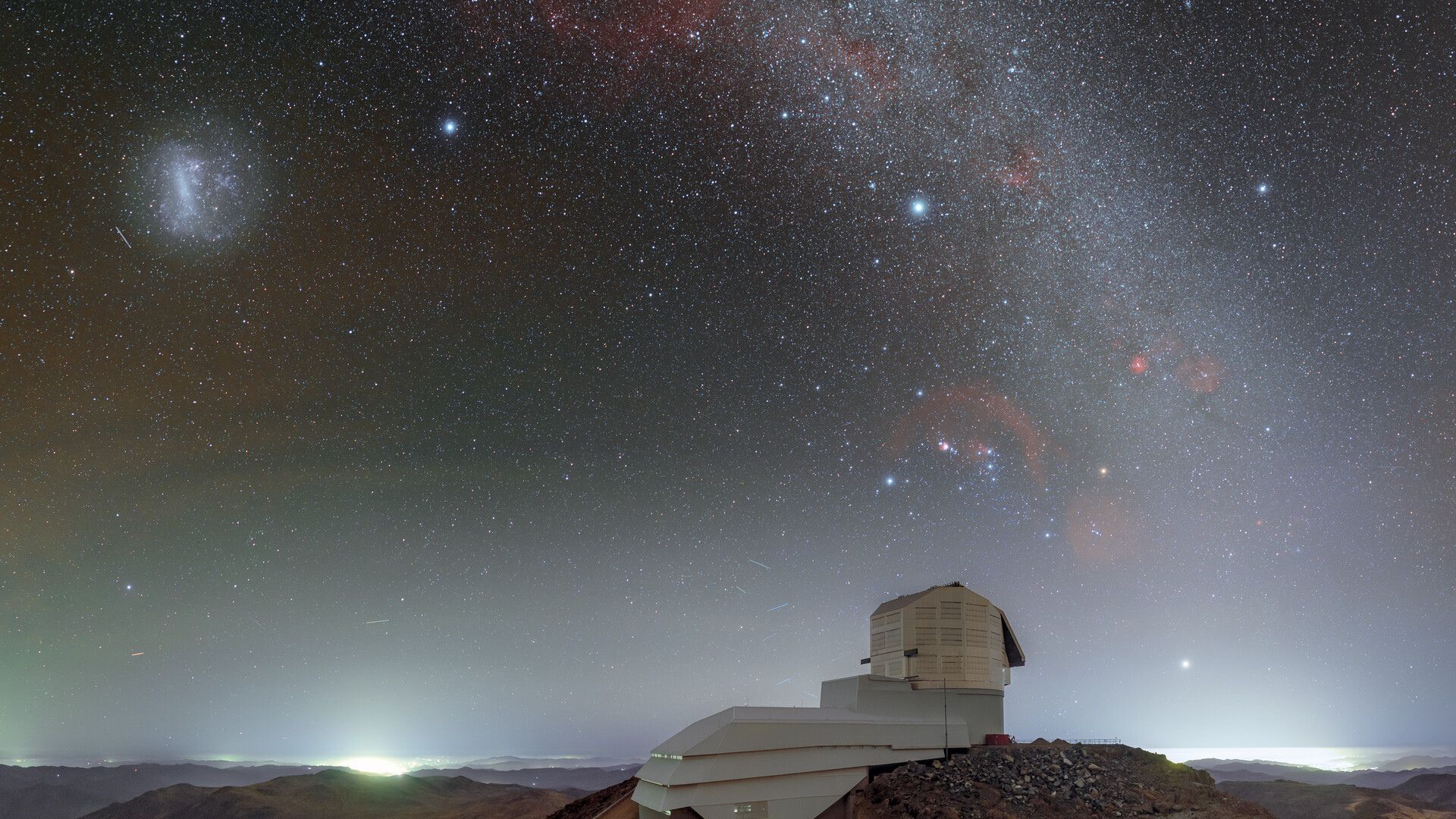Named for the pioneering astrophysicist Vera C. Rubin, whose work confirmed the existence of dark matter, the Vera C. Rubin Observatory stands as one of the most ambitious ground-based telescopes ever built.
Rubin’s mission is to survey the entire southern sky every three nights, using its 8.4-meter Simonyi Survey Telescope and a record-breaking 3.2 gigapixel LSST Camera, the largest digital camera.
What is it?
This image captures the Rubin Observatory beneath a dazzling sweep of the southern Milky Way galaxy, with the Large Magellanic Cloud glowing softly to the left. The Milky Way’s arc above mirrors the vast field Rubin will soon observe in exquisite detail, night after night, as it builds the most comprehensive record of the changing night sky ever attempted.
You may like
Where is it?
The Rubin Observatory is located at the summit of Cerro Pachón in the Chilean Andes mountains.
The Large Magellanic Cloud can be seen in the top left of this image. (Image credit: RubinObs/NOIRLab/SLAC/NSF/DOE/AURA/P. Horálek (Institute of Physics in Opava))Why is it amazing?
Now that it’s fully operational, Rubin is embarking on a 10-year-long survey, known as the Legacy Survey of Space and Time (LSST), which will record the positions, brightness and motions of billions of celestial objects. The amount of data it will collect is so large that astronomers working at the observatory need an electronic ‘data butler’ to help manage the telecope’s images.
Using its camera, Rubin will detect up to 10 million transient changes in the sky every single night, from asteroids to supernovas.
Want to learn more?
You can learn more about the Vera C. Rubin Observatory and other ground-based telescopes.


